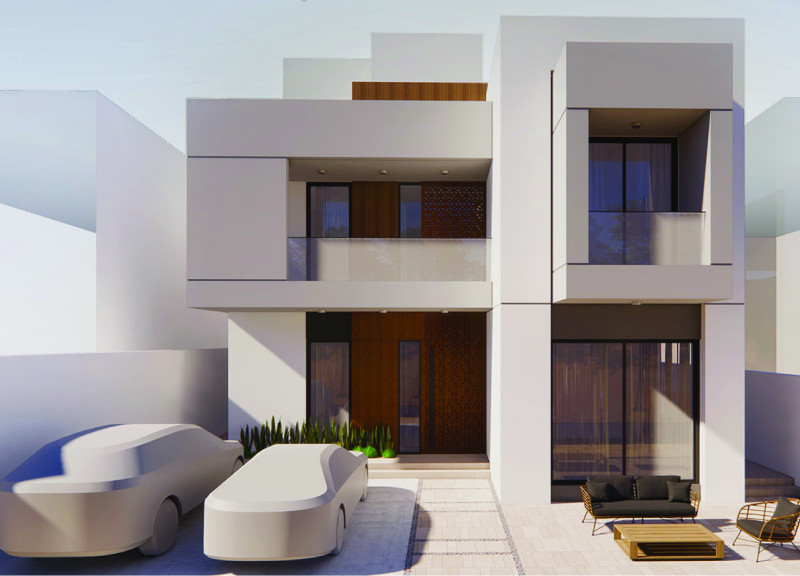5 key facts about this project
At its core, the project represents a synthesis of innovative architectural ideas and sustainable living. Designed to serve as a multi-functional space, it embodies principles of flexibility and adaptability, allowing it to cater to a diverse range of activities. The layout encourages interaction among users, promoting a sense of community while providing necessary privacy where needed. This dual function is pivotal to its design ethos, reflecting a growing trend in architecture to accommodate varied lifestyles and social dynamics.
The design approach employed is characterized by a commitment to environmental sensitivity. The choice of materials underscores this philosophy, with a careful selection that includes sustainably sourced timber, durable concrete, and high-performance glass. Each of these materials not only serves a specific structural or aesthetic function but also reflects the project's aim to minimize its carbon footprint. The use of reclaimed materials further enhances the project’s sustainability narrative, showcasing an awareness of material history and lifecycle, which is increasingly significant in contemporary architectural discussions.
Visually, the project employs a range of design strategies that enhance its integration into the surrounding environment. Large windows and open spaces are utilized to maximize natural light, reducing reliance on artificial lighting while establishing a strong connection with the exterior landscape. The thoughtful arrangement of outdoor spaces provides inviting areas for relaxation and interaction, blurring the lines between interior and exterior living. These elements engage users with their surroundings, fostering a sense of belonging and continuity with nature.
The architectural plans detail an organized layout that guides movement through the space, with strategically placed communal areas that invite gathering and collaboration. The architectural sections reveal the thoughtful elevation and sectioning of spaces, preserving sightlines and ensuring that all areas benefit from natural ventilation and light. Such considerations are essential for occupant well-being, emphasizing an increased focus on health and comfort within architectural design.
Unique to this project is its responsiveness to the climatic conditions of its location. The orientation of the building, alongside the incorporation of passive design strategies, demonstrates a sophisticated understanding of solar paths and wind patterns. This thoughtful consideration not only enhances energy efficiency but also enriches the user experience by creating comfortable indoor environments.
The architectural designs reflect a balance of modern aesthetics and traditional forms, inviting users to engage with the structure on multiple levels. This engagement is facilitated by the use of materials that connect with local building traditions while simultaneously introducing contemporary techniques. The outcome is an architectural composition that feels both familiar and innovative, resonating with a broader narrative about responsible architecture in the 21st century.
In examining this project, one can appreciate the intricate interplay between design, materiality, and function, all tailored to foster community interaction and environmental mindfulness. Readers are encouraged to delve deeper into the project presentation for a more comprehensive understanding, exploring the architectural plans, architectural sections, and architectural ideas that contribute to its overall conception and realization. Such an exploration promises to yield valuable insights into the nuanced processes and considerations that drive contemporary architectural practice.
























